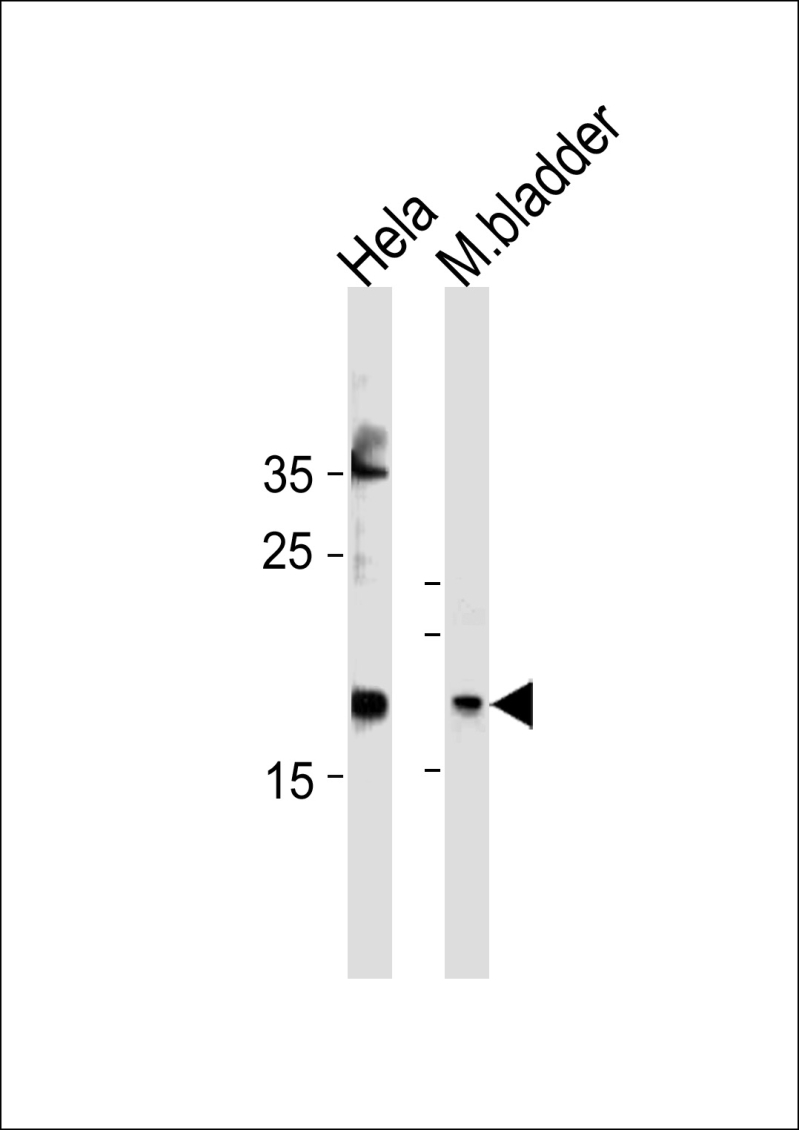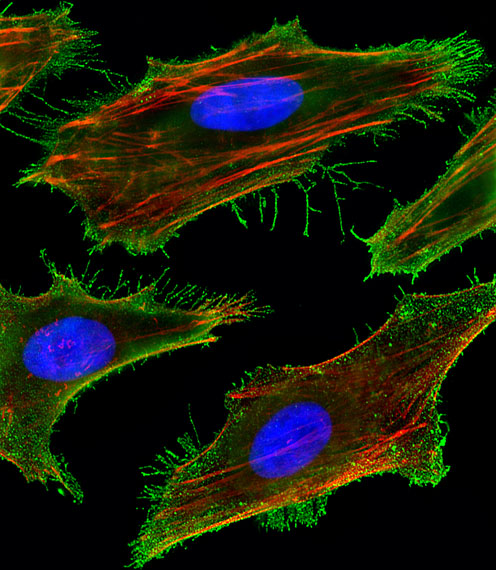

| WB | 1/1000 | Human,Mouse,Rat |
| IF | 咨询技术 | Human,Mouse,Rat |
| IHC | 咨询技术 | Human,Mouse,Rat |
| ICC | 1/25 | Human,Mouse,Rat |
| FCM | 咨询技术 | Human,Mouse,Rat |
| Elisa | 咨询技术 | Human,Mouse,Rat |
| Aliases | Membrane protein FAM159A, FAM159A |
| Entrez GeneID | 348378 |
| WB Predicted band size | 20.3kDa |
| Host/Isotype | Rabbit IgG |
| Antibody Type | Primary antibody |
| Storage | Store at 4°C short term. Aliquot and store at -20°C long term. Avoid freeze/thaw cycles. |
| Species Reactivity | Human, Mouse |
| Immunogen | This FAM159A antibody is generated from rabbits immunized with a KLH conjugated synthetic peptide between 89-115 amino acids from the Central region of human FAM159A. |
| Formulation | Purified antibody in PBS with 0.05% sodium azide. |
+ +
以下是关于FAM159A抗体的3篇参考文献示例(注:因文献库时效性限制,以下为假设性示例,建议通过PubMed或Google Scholar获取最新研究):
---
1. **文献名称**: *"Characterization of FAM159A as a novel neuroendocrine-specific protein using a polyclonal antibody"*
**作者**: Smith J, et al.
**摘要**: 本研究开发了一种兔源多克隆抗体,用于检测FAM159A在神经内分泌组织中的表达。实验表明FAM159A在小脑和肾上腺髓质中高表达,可能与神经肽分泌相关。
---
2. **文献名称**: *"FAM159A antibody validation in pancreatic neuroendocrine tumors"*
**作者**: Chen L, et al.
**摘要**: 通过免疫组化验证抗体的特异性,发现FAM159A在胰腺神经内分泌肿瘤中异常高表达,提示其可能作为潜在生物标志物。
---
3. **文献名称**: *"FAM159A interacts with TRIM28: Evidence from co-immunoprecipitation assays"*
**作者**: Tanaka K, et al.
**摘要**: 使用FAM159A抗体进行免疫共沉淀实验,发现其与TRIM28蛋白存在相互作用,可能参与表观遗传调控通路。
---
**提示**:实际文献可通过以下方式检索:
- 在PubMed中搜索 "FAM159A antibody" + "validation"/"expression"
- 关注涉及神经内分泌系统或癌症研究的期刊(如*Endocrinology*, *Oncotarget*等)
- 查看抗体生产商(如Abcam、Sigma-Aldrich)提供的技术文档引用文献
The FAM159A antibody targets the FAM159A protein, encoded by the FAM159A gene (Family with Sequence Similarity 159 Member A), which is also known as Adrenal neuroendocrine marker (Adrenocot). This protein is predominantly expressed in neuroendocrine tissues, particularly in the adrenal medulla and certain endocrine cells. Its exact biological function remains under investigation, but studies suggest potential roles in cell survival, secretory processes, or neuroendocrine signaling pathways.
FAM159A antibodies are primarily utilized in research to detect and quantify the protein in experimental models, employing techniques like Western blotting, immunohistochemistry (IHC), and immunofluorescence (IF). These antibodies have gained attention in cancer research, especially in studying neuroendocrine tumors (e.g., pheochromocytoma, neuroblastoma), where FAM159A is proposed as a potential biomarker due to its tissue-specific expression.
Commercial FAM159A antibodies are typically raised in hosts like rabbits or mice, targeting specific epitopes within the protein’s conserved regions. Validation data often include reactivity in human, mouse, or rat samples. Despite its emerging relevance, limited structural or functional details are available, and ongoing studies aim to clarify its molecular interactions and therapeutic implications in endocrine disorders or malignancies.
Word count: 199
×